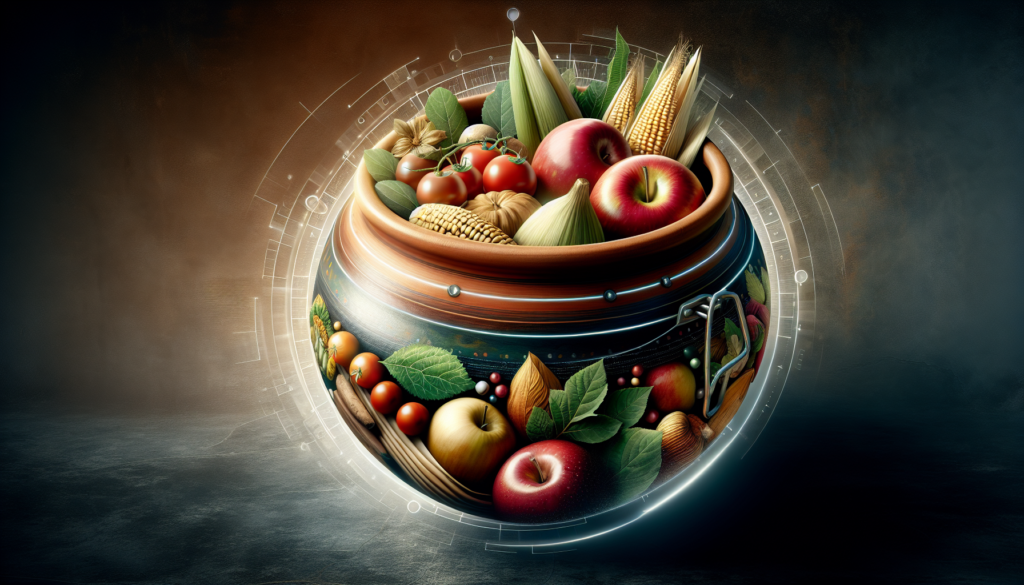Have you ever wondered how to keep your food fresh and stored without relying on electricity? In this article, we will explore some innovative food storage techniques that require no electricity. From traditional methods passed down through generations to clever modern inventions, you will discover a range of options to preserve your food in the absence of power. So, whether you’re an avid camper, preparing for a power outage, or simply looking for sustainable alternatives, these techniques will help you keep your food safe and delicious for longer periods of time. Let’s dive in and explore these fascinating methods of food storage without electricity!
Root Cellar Storage
Root cellar storage is an innovative food preservation technique that has been used for centuries to keep fruits, vegetables, and other perishable foods fresh for extended periods of time. By harnessing the natural coolness and humidity of the earth, a root cellar provides the ideal conditions for storing produce. In this article, we will explore the benefits of root cellar storage, learn how to build a root cellar, and discover some tips for using this traditional food preservation method effectively.

1.1 Benefits of Root Cellar Storage
Root cellar storage offers a range of benefits for anyone looking to preserve their harvest or extend the shelf life of their produce. Here are a few advantages of utilizing a root cellar:
-
Extended Shelf Life: The cool, consistent temperature and high humidity levels in a root cellar help slow down the natural decay process of fruits and vegetables, allowing them to last much longer than if stored at room temperature.
-
Preserves Nutritional Value: Unlike other preservation methods that may involve heat or chemicals, root cellar storage helps retain the nutritional integrity of the stored foods. By keeping them in their natural state, essential vitamins and minerals are preserved for longer.
-
Minimal Energy Consumption: Root cellars require little to no electricity to operate, making them an environmentally-friendly option for food storage. By utilizing the natural properties of the earth, you can keep your produce fresh without relying on power-hungry appliances.
1.2 How to Build a Root Cellar
Building a root cellar doesn’t have to be a daunting task. With some planning and basic construction skills, you can create an effective storage space for your fruits, vegetables, and other food items. Follow these steps to build your own root cellar:
-
Location: Choose a suitable location for your root cellar. Ideally, it should be situated on the north side of your home or in a shaded area to prevent direct sunlight from heating up the space. The spot should also have good drainage to prevent water accumulation.
-
Design: Determine the size and design of your root cellar based on your storage needs and available space. Common options include a dugout root cellar, a hillside root cellar, or an above-ground basement root cellar.
-
Insulation: Proper insulation is crucial to maintain a consistent temperature inside the root cellar. Use materials such as straw bales, hay, or insulating foam board to line the walls, ceiling, and floor.
-
Ventilation: Install a ventilation system to ensure a steady supply of fresh air. This can be achieved through vents or pipes that allow for airflow while preventing excess moisture buildup.
-
Shelving and Storage: Install sturdy shelving units to maximize storage space. Opt for materials like wood or wire racks that can withstand the moisture and weight of various food items.
-
Temperature and Humidity Control: Monitor the temperature and humidity levels inside the root cellar regularly. A thermometer and hygrometer can help you maintain optimal conditions for different types of produce.

1.3 Tips for Using a Root Cellar
To make the most of your root cellar storage, consider the following tips:
-
Organize Your Produce: Label and organize your fruits and vegetables to easily locate specific items when needed. Group similar types of produce together and store them in separate containers or bins.
-
Regular Inspections: Check your stored produce regularly for signs of spoilage or rot. Remove any damaged items to prevent the spread of decay to other foods.
-
Air Circulation: Proper air circulation is essential to prevent mold and mildew growth. Avoid packing items too tightly, and leave some space between containers to allow air to flow freely.
-
Rotate Stock: Use the oldest produce first to avoid waste. Regularly rotate your stock, placing fresher items towards the back and older items towards the front.
-
Avoid Pests: Keep pests at bay by sealing any cracks or openings in the root cellar. Install wire mesh or screens on vents and windows to prevent entry.
-
Control Humidity: Adjust the humidity levels in your root cellar by using damp towels or small containers of water. This will create a moist environment for produce that requires higher humidity, while still maintaining overall moisture control.
-
Learn from Experience: Every root cellar is unique, and it may take some trial and error to find the optimal conditions for your stored produce. Keep track of what works best and make adjustments accordingly.
By following these tips, you can ensure that your root cellar storage remains effective and your produce stays fresh for a longer period of time.
Stay tuned for more innovative food storage techniques without electricity in the upcoming sections!
